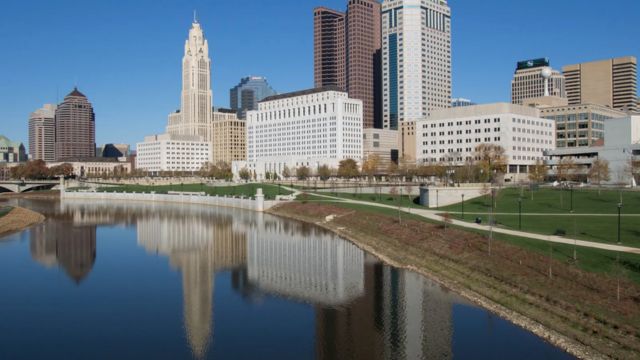Tucked away where the Ohio and Mississippi rivers merge is Cairo, a town rich in history and unfortunately neglected. Cairo used to be a hive of trade and community, but now its streets are strewn with abandoned buildings and crumbling façade, a somber tribute to vanished grandeur. How did this formerly prosperous town fade into the background? Come along as we explore Cairo, Illinois’s fascinating history, from its storied past to its sad present.
The Climbing of Cairo
Established in 1818 and named for its Egyptian equivalent, Cairo quickly became an important hub for trade and transportation. Ideally situated at the confluence of two principal rivers, the town prospered as a major steamboat port and an important intersection for the expanding railroad system.
Cairo gained more importance during the Civil War as a stronghold of Union support and a haven for freed slaves. Its population had increased to more than 15,000 by the late 1800s, and it supported a thriving mix of industrial, cotton, and lumber industries.
Cairo’s Decline
Cairo’s wealth, however, was not to last. Throughout the 20th century, the community faced an unrelenting barrage of hardships:
- the decline of rail and river transportation, replaced by the rise of roads and bridges.
- the disastrous 1927 flood, which destroyed livelihoods and infrastructure alike.
- the Great Depression’s debilitating hold, which made already dire economic conditions worse.
- the emergence of segregation and racial tension, which led to violent confrontations between locals.
- the departure of companies and job openings, causing a downward spiral to begin.
- The threat of deteriorating environmental conditions due to pollution, erosion, and flooding.
- Cairo’s steady decline into desolation was accelerated by these aggravating circumstances, which led to a widespread flight in search of
- better lands. The town’s population had fallen to a small percentage of its previous heights by the 2010 census, a sobering reflection of its declining circumstances.
Cairo’s Vestiges
Cairo’s terrain is littered with relics from a bygone period, and it currently presents a moving picture of beauty from the past:
- The Cairo Historic District includes the downtown area as well as a number of historic buildings, such as the Custom House, Magnolia Manor, and the Gem Theater.
- The Cairo Mississippi River Bridge is a remnant of the past that is currently closed to traffic and silently records decades of transformation.
- The Cairo I-57 Bridge, a troubled but functional link to Kentucky, is struggling due to structural flaws.
- The Safford Memorial Library is a run-down, neglected 1912 Carnegie relic that is now abandoned.
the revered grounds of Elmwood Cemetery, which are home to the remains of historical figures such as statesmen, industrial titans, and soldiers of the American Civil War.
Cairo: A Time-Lost Town
Cairo’s story is one of great tragedy and resiliency; it is a warning story that reverberates throughout history. Nestled among its rundown avenues and collapsing buildings is a poignant symbol of the fleeting essence of luck and the unwavering essence of human pursuits. Cairo, despite being largely forgotten, beckons as a gloomy but alluring place that begs contemplation of the periodic cycles of growth and ruin. Cairo persists despite being abandoned; it serves as a silent watchman on the passing of time and a monument to the resilience of the human spirit.




